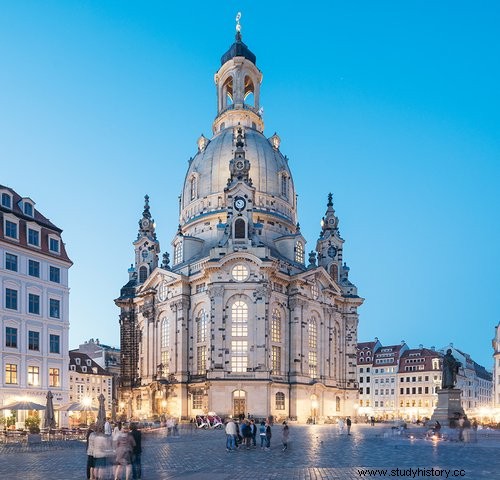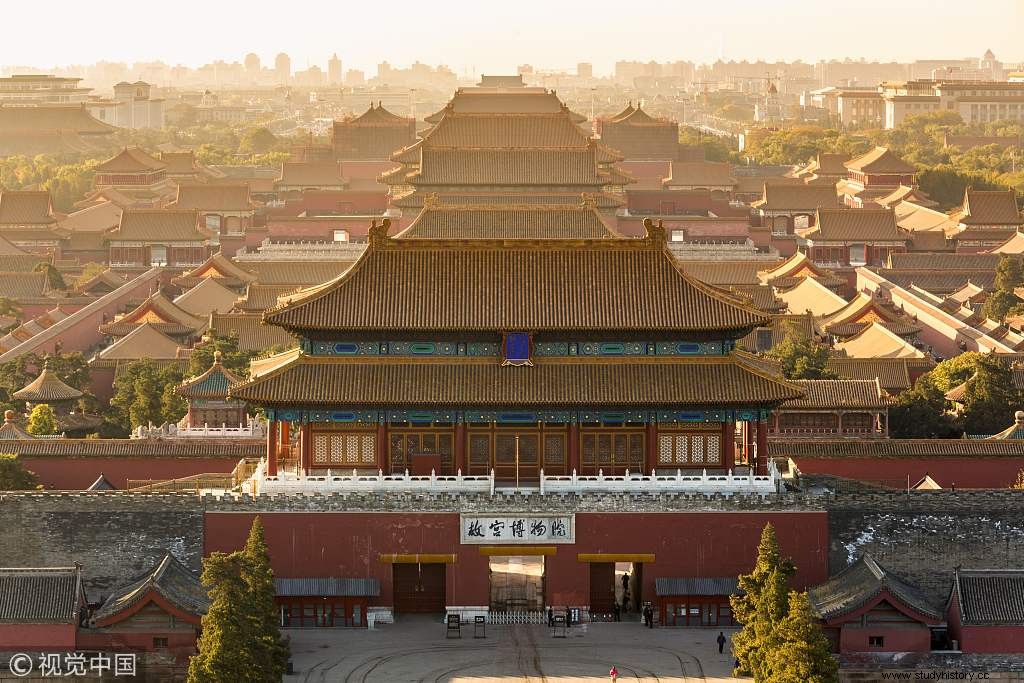It is always interesting to know the history behind the most iconic buildings around the world. Emperors, wars and centuries later, these buildings still stand tall and proud, attracting millions of visitors every year.
Hagia Sophia, Turkey

Since its original construction in 360 AD, the function of Hagia Sophia has varied over the years.
It was the Byzantine emperor Constantius who first commissioned the construction. Subsequently, Hagia Sophia served as a basilica for the Greek Orthodox Christian Church. During its construction, Istanbul was originally known as Constantinople, named after Constantius' father, Constantine I who was the first ruler of the Byzantine Empire. The original structure had a wooden roof, but in 404 AD was burned to the ground during the reign of Arcadius (395 to 408 AD). It was rebuilt by his successor, Emperor Theodosios II, and the construction was completed in 415. Again, the roof was made of wood, a major mistake in the years that followed. When Emperor Justinian I ruled from 527 to 565, rebellion against him caused Hagia Sophia to be burned to the ground for the second time.
This time the church was damaged beyond repair, so by order of Emperor Justinian, the original structure was demolished in 532. Two famous architects, Isidoros von Milet and Anthemios von Trallos were commissioned by the emperor to build a new basilica. So the third structure was built in 537, which is the one we see today. Since Hagia Sophia was then a Greek Orthodox church, it was considered the central church of the Byzantines and would remain so for the first 900 years. New emperors were crowned there too.
The fate and function of the church changed when the Ottomans captured Constantinople in 1453. The city was led by Emperor Fatih Sultan Mehmed, and was named Istanbul. And as the Ottomans were Muslims, Hagia Sophia was converted into a mosque. Many of the mosaics, originally Orthodox themes, were covered with Islamic calligraphy. The medallions hanging on the columns now contain the Prophet Muhammad, his two grandsons, the name of Allah and the first four caliphs.
Gateway Arch, USA

The Gateway Arch in St. Louis, also known as the St. Louis Arch, sits along the west bank of the Mississippi River. The city is considered the 'Gateway to the West', which was named in the nineteenth century when westward expansion occurred in the United States. Part of the Gateway Arch National Park, the archway commemorates the Louisiana Purchase in 1803 and also the opening of the west to early settlers, following the Lewis and Clark Expedition (1804–06) that occurred nearby. The park is also home to the Old Courthouse, where Dred Scott, who was a slave, sued for his freedom. The case went to the Supreme Court and added fuel to the debate about slavery as the country moved towards civil war.
The arch was designed by the Finnish-American architect Eero Saarinen in 1948, and was built between 1963 and 1965. Standing 192 meters tall, the legs of the monument stand apart at a distance equal to the height. There are two trams, each with room for five people at a time, which take visitors up to the observation deck at the top. Sixteen windows face both east and west, giving great views of the city, countryside and river. The Museum of Westward Expansion at the foot of the arch has displays showing life in the 19th century. Exhibits also show the construction of the arch.
Dancing House, Prague

The Dancing House in Prague is located in a place with significant history. When the US bombed Prague in 1945, the house where the iconic building now stands was destroyed. It would remain so until 1960. Václav Havel's family co-owned the plot next to the site. Havel had spent most of his life there. In 1986, Vlado Milunić, an architect from the Czechoslovak community, came up with an idea - to build a project on the site, which he discussed with Havel. During the Velvet Revolution a few years later, Havel was elected president of Czechoslovakia. His authority gave wings to Milunić's project on the spot. Although Havel wanted the place to be a cultural centre, it was not to be.
Nationale-Nederlanden, a Dutch insurance company, sponsored the construction. Milunić was chosen as the lead designer and was asked to collaborate with another architect, Jean Nouvel. However, Nouvel rejected the proposal because he considered the space too small, and it was Frank Gehry, a Canadian-American architect, who accepted the plan. The bank provided almost unlimited financing.
The building was to mark Czechoslovakia's transition from a communist regime to a democratic parliament. The house's unusual shape is attributed to de-constructivist architecture. Ninety nine concrete panels of different dimensions and shapes support the form. A large metal structure, nicknamed Mary, is built on top of the house.
Musée d'Orsay, France

The Musée d'Orsay has quite a bit of history - it was actually a railway station before it was converted into a museum. The railway station, Palais d'Orsay, was built in 1810 before it was burned down by the Paris municipality in 1871.
After the disaster, Victor Laloux, a French architect of the period, together with two other architects designed the terminal for the French railway company Compagnie du Chemin de fer d'Orleans. The aim was to welcome visitors to the University Exhibition in 1900. An elegant stone front was built, along with more modern aspects. Laloux implemented lifts for heavy luggage, platforms below the ground and lifts for passengers (separate from luggage compartment). The station was built in such a way that it faced the Louvre and the Jardin des Tuileries. The ground floor also held a reception service. As well as being a transit for passengers, the station was also a main place where associations and political parties held banquets and meetings. In World War II, the station was used as a dispatch center to send packages to prisoners. It became a reception center for prisoners during the liberation.
The decision to convert the railway station into a museum was only taken in 1977 by the President of the Republic Valéry Giscard d'Estaing, although it would be nine years before President François Mitterrand would open it. Today, the museum contains the largest collection of impressionist and post-impressionist paintings in the world, which includes works by Berthe Morisot, Degas, Monet, Van Gogh, Renoir and Gauguin, among others.
Dresden Frauenkirche, Germany

The original Dresden Frauenkirche was built between 1726 and 1743. Although the site was predominantly Catholic, the church was a Lutheran parish church. It was designed by George Bähr who was the city architect of Dresden. During the time, it was a remarkable achievement to place a stone dome weighing 12,000 tons on eight supports. The stone dome, called Stenerne Glocke or stone clock, was the church's most notable feature and dominated the city for the next two centuries.
In 1945, Anglo-American forces began to attack the city, and after withstanding a two-day assault, the Frauenkirche dome collapsed. The altar was among the few parts left in the ruins. For the next forty-five years, the church would remain in ruins under East German communist rule. After World War II, the residents took it upon themselves to collect and organize what was left of the building, so that a construction would be possible in the future. In 1966, however, the destroyed church was declared a war memorial. Commemorations were held on the anniversary of the attacks. In 1985, the city decided to rebuild the church, but it was not until 1990 that a fundraiser was started to do so. The whole project became a reality when donations poured in from donors, bank financiers and patrons. Work began in 1994, and it was based on the original design from the 1720s. Apart from the dome, the church was built with original materials, using modern technology. Each stone was carefully placed as the original design. Visitors can easily identify the older stones due to their darker color caused by the fire and weather. The exterior of the church, including the dome and the cross, was completed in 2004. The next year, the construction of the interior was completed.
The Forbidden City, China

The Forbidden City in Beijing, China was the former residence of the Yongle Emperor, Zhu Di. Built during the Ming dynasty, it was built from 1406 to 1420 and the former imperial palace is surrounded by a series of spectacular gardens, parks and temples. The Forbidden City was named so because no one under the emperor's rule was allowed to either enter or leave the place without the emperor's permission.
The construction of the city lasted fourteen years and it is believed that more than a million workers worked on the site. The entire complex houses 980 buildings with a total of 8,886 rooms. The palace, built in traditional Chinese palatial architecture, is a symbol of the wealth of the Chinese emperors. It was the home of the emperors from the Ming dynasty to the end of the Qing dynasty in 1924. After serving as the home of 24 emperors, the Forbidden City ceased to be the center of politics in China after the abdication of Puyi (last emperor of China) in 1912. Puyi remained in the palace until he was evicted in 1924. Since 1925, the complex has stood for the palace, and in 1987 it was declared a World Heritage Site. The castle, now a museum, contains the largest collection of ancient wooden structures. The collection of artefacts and works of art now displayed here was built up over the years by the emperors.
Bran Castle, Romania

Bran Castle in Romania is better known in the world as Dracula's Castle, a name earned after Bram Stoker's Dracula. But no, the original castle has nothing to do with what is mentioned in Stoker's book, which describes the castle as a crumbling structure that houses Dracula. Despite having nothing to do with the book, the medieval castle actually has ancient weapons, armor, and underground passage, aside from the eerie noises that can be heard in the castle from time to time.
The castle was built between 1377 and 1388 by the Teutonic Knights on the land where Vlad the Impaler is said to have ruled. Vlad was notorious for his barbaric ways of dealing with enemies - after torturing them, he would impale their bodies on tall poles and place them on the battlefield as a warning to his other enemies. He would also destroy the enemies' sources by burning the crops and poisoning the water supply. He was exiled after his first reign. Speculation claims that Vlad was imprisoned in the castle for around two weeks.
The castle was given to Queen Marie in 1920. Her daughter, Princess Ileana, inherited it after her death. The princess converted it into a hospital during World War II. The communist regime seized the castle in 1948. In 2006 it was returned to the princess's son, Dominic von Habsburg, Princess Ileana's son. Now Bran Castle is a museum that displays the furniture and art collection of Queen Marie.
